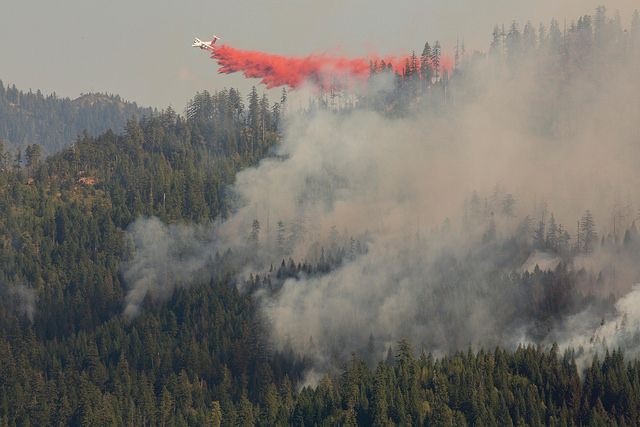Should we treat fires more like floods? Congress seems to think so.
Last week it passed a $36.5 billion bill that apportioned half a million dollars for wildfire recovery in addition to its main focus of hurricane and flood relief. Now, after one of the most expensive wildfire seasons on record, legislators are considering several other bills that would allow wildfire costs to be funded like those from hurricanes, tornadoes and other natural disasters.
The sentiment is understandable in the wake of the tragic Northern California fires. But policymakers should be wary of treating wildfires the way we do floods and hurricanes because there’s a fundamental problem with our federal disaster-spending programs: They can have the unintended consequence of encouraging people to live in harm’s way.
Lawmakers need to look no further than the National Flood Insurance Program, the subject of much criticism this hurricane season, for a lesson in the perverse incentives that can sprout after disasters.
By offering discounted insurance rates to coastal homeowners, federal policy encourages people to build and stay in risky areas. That’s why there are more than 150,000 properties in the program that have flooded multiple times yet still end up being rebuilt over and over again.
One egregious example is a $69,000 Mississippi home that’s flooded repeatedly for three decades, resulting more than half a million dollars in claims.
Wildfire spending can have a similar effect, unintentionally encouraging people to live in risky areas. Federal agencies are devoting more and more funds to wildfire suppression — without solving the underlying issues that spark costly fires in the first place.
The Forest Service has shifted its attention from managing forests to putting out fires, prompting some lawmakers to dub it the “Fire Service.” The agency has spent a record $2 billion fighting wildfires this year, which amounts to more than half its budget, up from just 16 percent two decades ago.
Recent policy has been to spend, spend, spend on suppression, typically by diverting funds from accounts earmarked for managing forests. One symptom is that some western communities have come to expect refitted fire-fighting jets to be on call half the year, even though many officials lament that aerial drops of fire retardant often do little more than “paint stuff red” — at a cost of tens of thousands of dollars an hour.
The obsession with suppression creates problems for nature and man alike. Many landscapes are accustomed to a regular cycle of low-intensity fires that renew ecosystems, and periodic wildfire also ensures that forests don’t become tinder boxes of downed timber and other fuels that accumulate over years. Once fuel-heavy areas finally ignite, whether from human activity or a lightning strike, they can spark large-scale, deadly fires.
The Forest Service knows that Congress will reimburse it for fire expenditures, because it has repeatedly done so. Systematic disaster funding will only entrench the incentives to spend more on fires and less on land management, especially given population shifts toward forests and wilderness.
In the 1960s, 25 million people lived in the so-called “wildland-urban interface” — the areas in and around forests, grasslands and other natural amenities. Today, the population living in these areas has risen to 140 million. By some estimates, one of every three houses in the lower 48 is located within it.
In light of these long-term trends, legislators should focus on reducing fire risk first and foremost. Policies aimed at land and forest management practices, like controlled burning or selective thinning, can mitigate risk but require action long before catastrophic fires are ablaze. With policy changes, standards in the insurance industry and the way premiums are priced could follow. Pricing insurance based on actual fire risk — rather than on a risk softened by the expectation of all-out fire-suppression policies — should encourage more calculated and cautious development of the fringes of wildlands.
Communities and individual residents have their parts to play as well, whether making homes and structures more defensible, developing community-wide plans to reduce wildfire risk or making other “firewise” preparations. And as with coastal flooding, in some places there’s likely only one way to reduce risk sufficiently: relocate.
Treating wildfires as natural disasters may sound like a good idea, but if legislators provide an implicit blank check for fighting fires, they risk spurring more development in fire-prone areas — and potentially nudging more people and homes into harm’s way.




